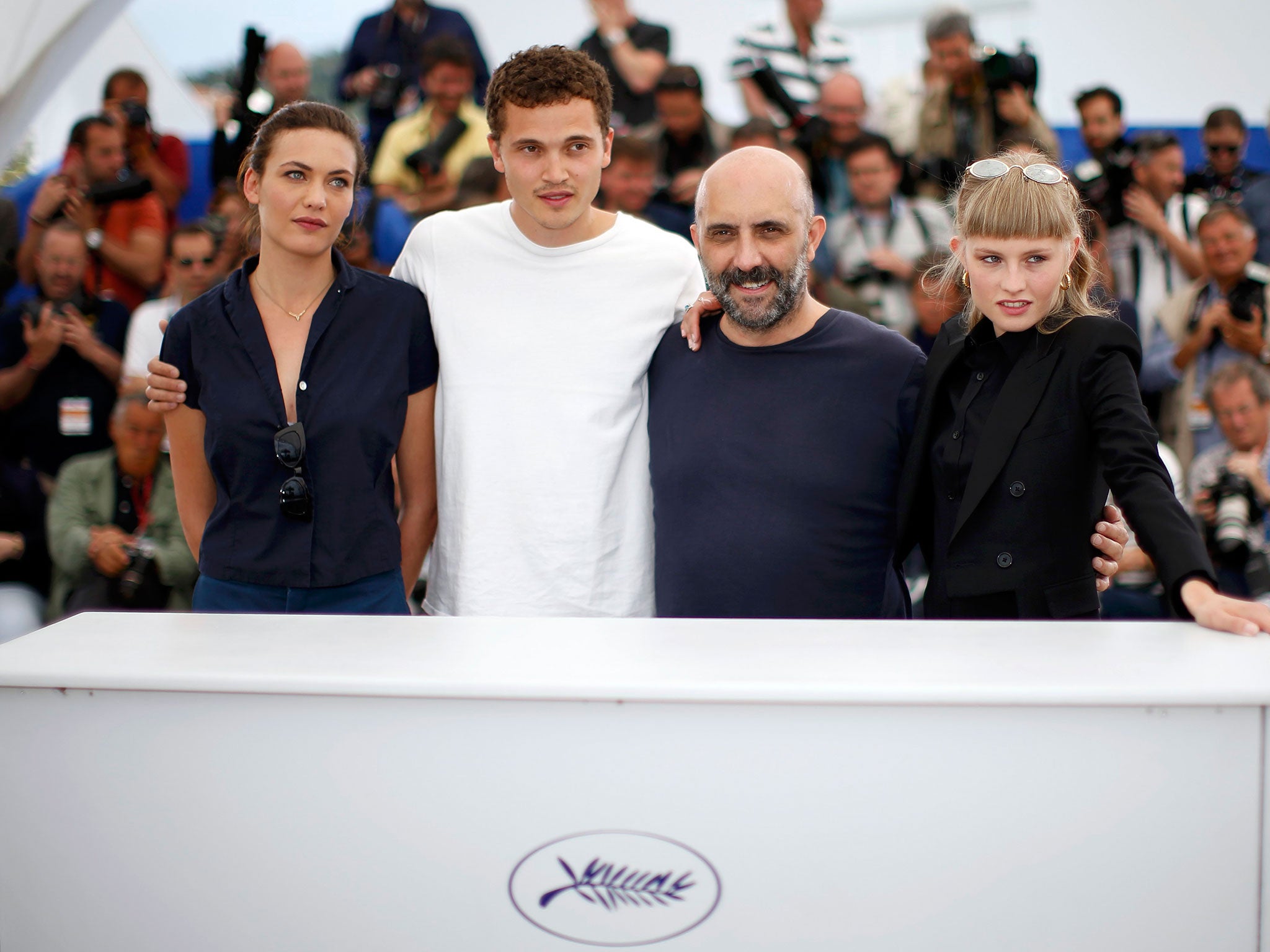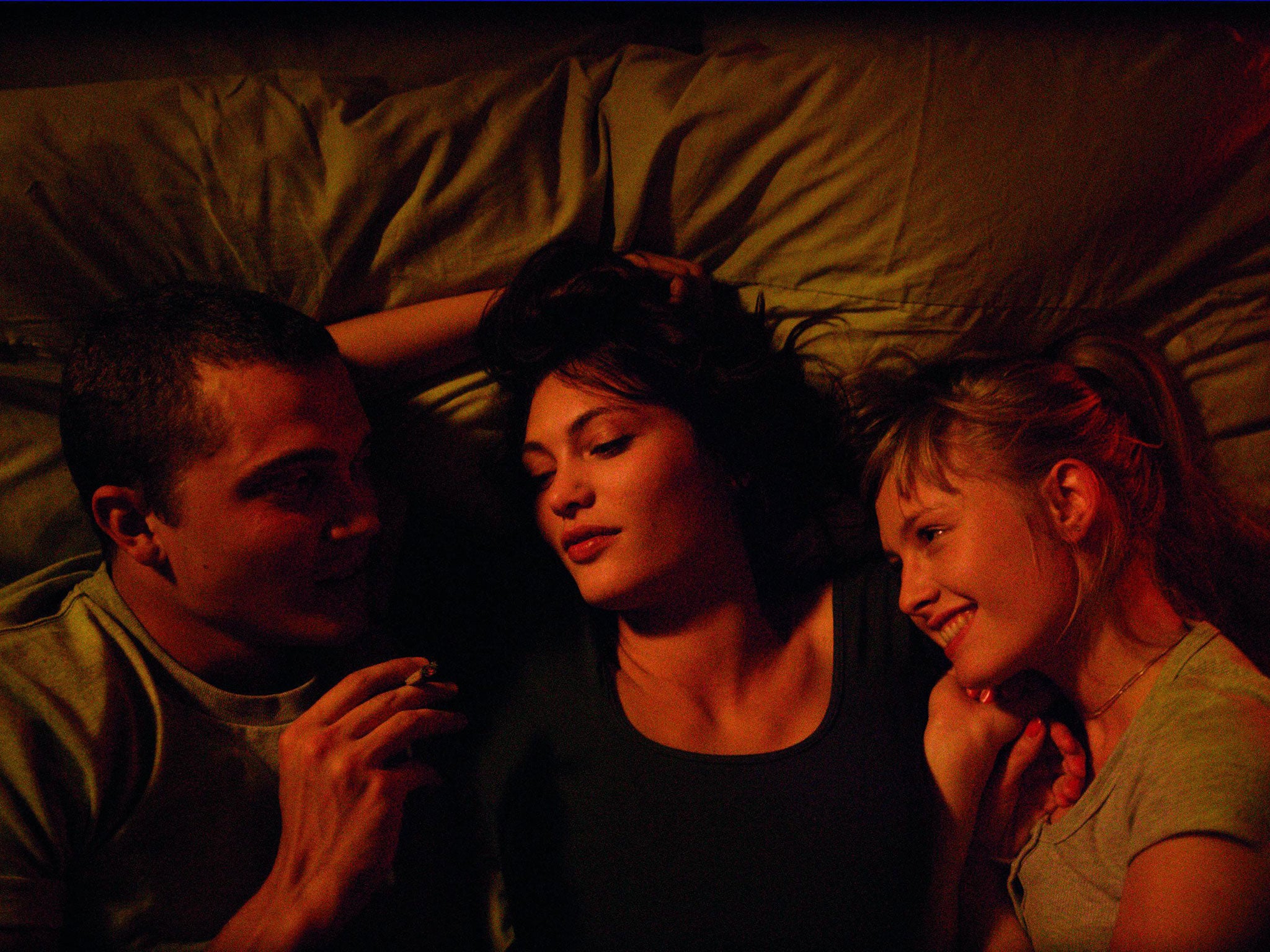Love, Cannes film review: Steamy erotica gets the red-light treatment
What sets Noé’s film apart from standard pornographic fare is his visceral brilliance, especially in his use of sound and red lens filters

Your support helps us to tell the story
From reproductive rights to climate change to Big Tech, The Independent is on the ground when the story is developing. Whether it's investigating the financials of Elon Musk's pro-Trump PAC or producing our latest documentary, 'The A Word', which shines a light on the American women fighting for reproductive rights, we know how important it is to parse out the facts from the messaging.
At such a critical moment in US history, we need reporters on the ground. Your donation allows us to keep sending journalists to speak to both sides of the story.
The Independent is trusted by Americans across the entire political spectrum. And unlike many other quality news outlets, we choose not to lock Americans out of our reporting and analysis with paywalls. We believe quality journalism should be available to everyone, paid for by those who can afford it.
Your support makes all the difference.This was the hot ticket in Cannes, both in terms of the massive scrum trying to get into the midnight screening, and the explicit poster, which promised hard-core sex and lots of it. All in 3D.
It is directed by Gaspar Noé, the French director famous for transgressive movies like the ultra-violent Seul Contre Tous and Irréversible, which featured a graphic nine-minute rape scene. The last time there was this much sexual tension in a cinema it was for the limp Fifty Shades of Grey.
Noé delivers, although the sex scenes aren’t as hard core as one might expect – despite the film’s opening scene which features a man and woman cupping each other’s genitalia.
The man is Murphy, and as explained in one of Noé’s trademark inter-titles, Murphy’s law dictates that “everything that can go wrong, will”. Perhaps Noé had this fact in mind when he cast the awful Karl Glusman as his American in Paris.

In an opening sequence that features Murphy (badly) delivering a monologue describing where his life went wrong, he chides himself for thinking with his genitalia – the reason he is now living with a teenager Omi (Klara Kristin) and a baby. His ranting is cut off when he gets a call from the mother of his ex-girlfriend Electra (Aomi Muyock), informing him that she’s been missing for two months. He spends New Year’s Day reminiscing about the love of his life, especially their sex life, and hating the mother of his child.
What sets Noé’s film apart from standard pornographic fare is his visceral brilliance, especially in his use of sound and red lens filters. Apart from a “money shot” that splurges out at the audience, he doesn’t use 3D for up-close perspective shots. His favourite angle for sex scenes is one taken from a light-bulb’s perspective. The most erotic scene is one involving all three protagonists; other sex scenes include orgies, and an ill-advised comic interlude featuring a transsexual.
There are many shots in which Noé seems to be paying homage to his own oeuvre, especially Irréversible: a passageway that leads to an orgy resembles the subway tunnel where the notorious rape took place, and the colour palette is straight out of Enter the Void. Also notable are the film posters that appear on walls. Murphy’s favourite film is 2001, although Love plays more like an improvement on Stanley Kubrick’s Eyes Wide Shut.
Join our commenting forum
Join thought-provoking conversations, follow other Independent readers and see their replies
Comments